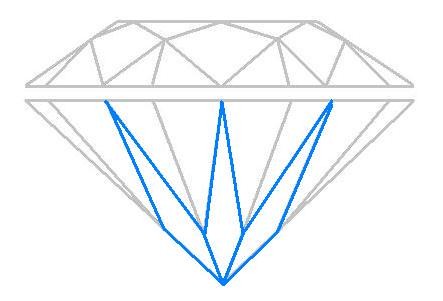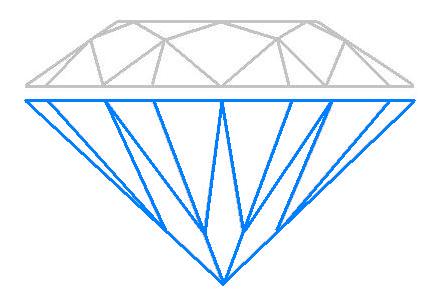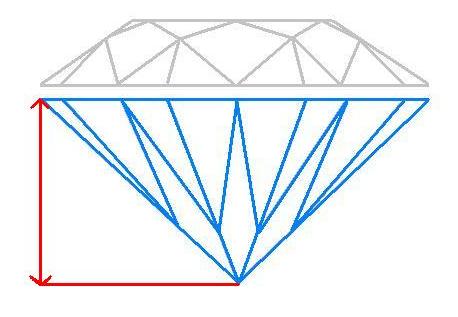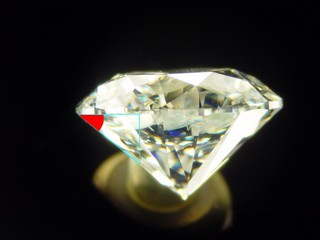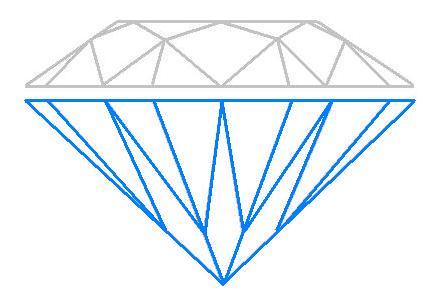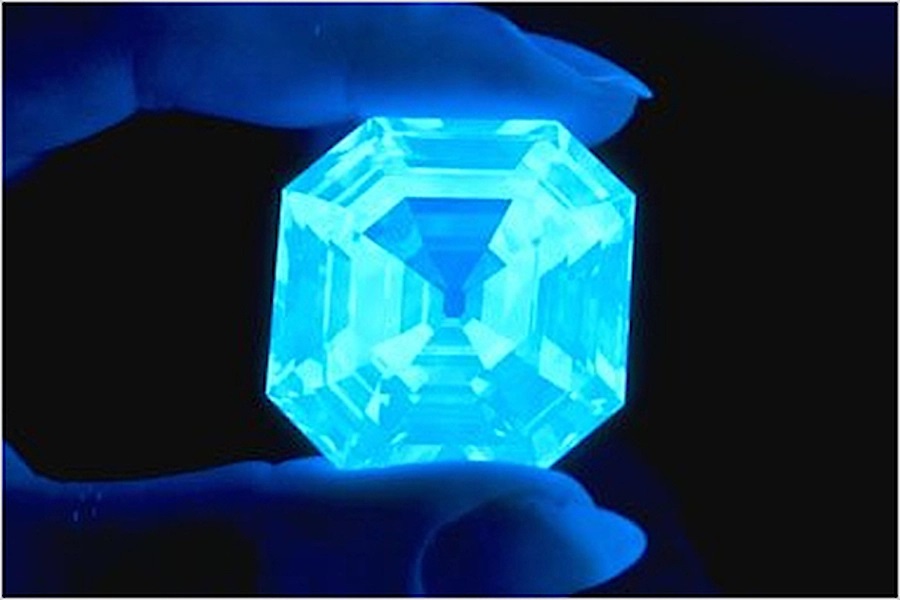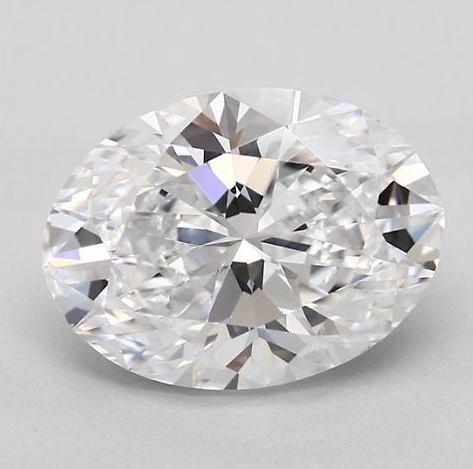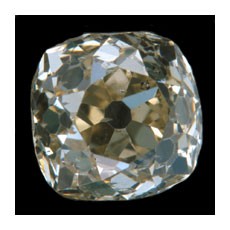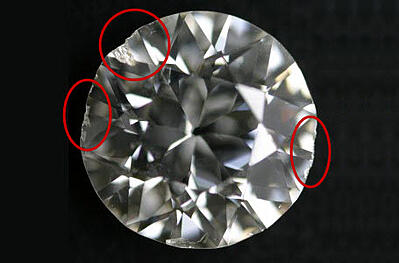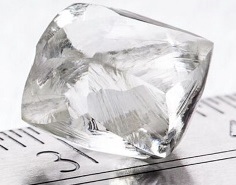The pavilion main facets are a crucial component of a diamond’s pavilion, contributing significantly to its overall brilliance, symmetry, and light performance. These facets are positioned on the lower half of the diamond, extending from the culet (the tip at the bottom) to the girdle (the widest part of the diamond). The precise arrangement and number of pavilion main facets influence how light interacts with the diamond, ultimately impacting its sparkle, fire, and overall appearance.
What are Pavilion Main Facets?
The pavilion main facets are the large, kite-shaped facets located on the pavilion of the diamond. These facets extend from the culet (the pointy bottom) to the girdle (the widest perimeter of the diamond).
Typically, round brilliant cut diamonds feature 8 pavilion main facets, while fancy shaped diamonds (such as princess, oval, and cushion) may have a different number of pavilion facets depending on their cut and shape. These facets are key to how the diamond handles light and contributes to its overall aesthetic.
Role of Pavilion Main Facets in Diamond Brilliance
1. Light Reflection and Dispersion
The pavilion main facets are responsible for the internal reflection and refraction of light within the diamond. When light enters the diamond from the table (top flat surface), it interacts with the crown and pavilion facets, causing the light to bounce off the facets and return to the viewer’s eye.
The kite shape of the facets allows for optimal light reflection, enhancing the diamond’s brilliance. Well-designed pavilion facets enable the diamond to exhibit maximum fire, with flashes of light reflecting through the crown.
When these facets are properly proportioned and aligned, they direct light in such a way that the diamond sparkles brilliantly. The facets also contribute to the dispersion of light, creating the colorful flashes that diamonds are famous for.
2. Maximizing Brilliance and Fire
The arrangement of the pavilion main facets is designed to maximize the amount of light that enters the diamond, which is then reflected back through the top facets (the crown). This direct interaction between the pavilion and the crown facets enhances the diamond’s overall brilliance and fire.
In a well-cut diamond, the pavilion main facets work in harmony with the crown facets and the table facet, creating a balance that allows for perfect light performance. This leads to the characteristic sparkle and depth seen in high-quality diamonds.
Properly proportioned pavilion facets allow light to reflect more efficiently, contributing to the vibrant appearance and dazzling visual effect of the diamond.
Effect of Pavilion Main Facets on Diamond Proportions and Symmetry
1. Symmetry and Overall Cut Quality
The symmetry of the pavilion main facets is crucial to achieving a well-proportioned diamond. If the facets are unevenly sized or misaligned, it can disrupt the balance of light reflection and refraction, reducing the diamond’s overall brilliance and fire.
A diamond with well-cut, symmetrical pavilion main facets will have superior light performance, and its sparkle will be uniform across the surface. This contributes to its high cut grade and overall quality.
Asymmetrical or poorly cut pavilion facets will reduce the diamond’s visual appeal, making it less desirable and potentially less valuable.
2. Impact on Diamond’s Shape
The pavilion main facets also contribute to the overall shape and outline of the diamond. In round brilliant diamonds, these facets create the characteristic round shape of the stone when viewed from the top.
In fancy shape diamonds, the pavilion main facets contribute to the unique shape of the diamond, whether it’s a princess, cushion, oval, or emerald cut. The number, shape, and arrangement of pavilion facets vary depending on the diamond shape, but all contribute to the overall visual appeal and proportions.
Pavilion Main Facets and Diamond Value
1. Cut Grade and Light Performance
The quality and symmetry of the pavilion main facets are essential to the cut grade of the diamond. Diamonds with well-cut facets tend to receive higher cut grades, as they exhibit better brilliance, fire, and overall visual appeal.
The cut grade is one of the most important factors in determining a diamond’s value, as it directly impacts the diamond’s aesthetic quality. A diamond with well-aligned pavilion main facets will have higher light performance, making it more desirable to buyers.
2. Aesthetic Appeal
The pavilion main facets are central to the beauty and aesthetic appeal of the diamond. When these facets are correctly cut and aligned, they enhance the diamond’s ability to reflect light, producing vibrant flashes and sparkling effects. This makes the diamond more attractive and valuable in the eyes of buyers.
Understanding Pavilion Main Facet Proportions
1. Ideal Pavilion Depth and Angle
The proportions of the pavilion main facets are closely tied to the pavilion depth and pavilion angle. Properly proportioned facets are critical for achieving optimal light reflection, which is why pavilion depth and pavilion angle are key factors in determining how well the facets will perform.
The ideal pavilion depth percentage typically ranges between 43% to 44% for round brilliant diamonds, and the pavilion angle should generally be between 40.6° and 41.8° for optimal brilliance.
Under-proportioned or over-proportioned pavilion main facets (such as an overly deep pavilion or a shallow pavilion) can cause a reduction in the diamond’s sparkle and can result in undesirable effects like a nailhead or fish eye.
2. Variations in Fancy Cut Diamonds
While round brilliant cut diamonds typically feature 8 pavilion main facets, other diamond shapes have different facet arrangements that are tailored to their unique geometry.
Princess cut diamonds generally have 4 pavilion main facets.
Cushion and radiant cuts feature a combination of pavilion facets that vary in number and shape to match their specific cut characteristics.
The Importance of Pavilion Main Facets
The pavilion main facets are an integral part of a diamond’s cut, and they significantly influence the diamond’s brilliance, fire, and overall appearance. These kite-shaped facets are responsible for reflecting and refracting light within the diamond, contributing to its characteristic sparkle and vibrancy. Properly proportioned and symmetrical pavilion facets result in a diamond that exhibits optimal light performance and has a high-quality appearance.
For diamonds with excellent cut grades, these facets work in harmony with the crown facets and table facet to create a beautiful and eye-catching diamond that is desirable to buyers. Understanding the role of the pavilion main facets and their symmetry, proportions, and alignment is essential when assessing a diamond’s value, quality, and visual appeal.
